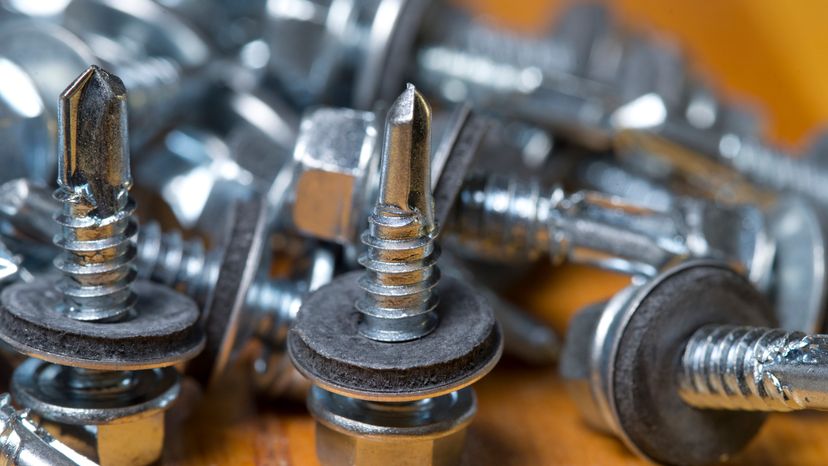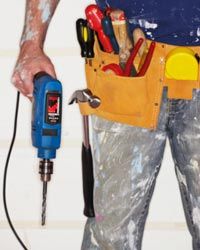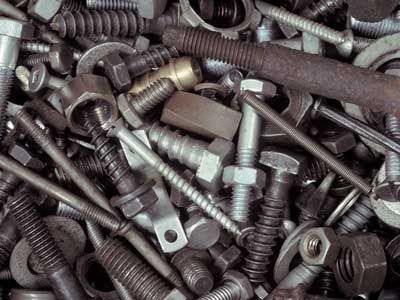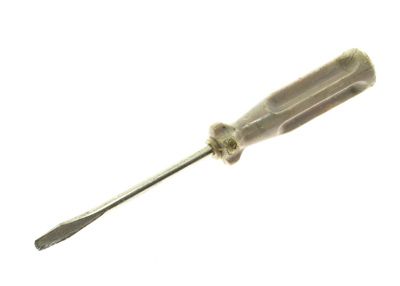
Self-tapping screws drill their own little tunnels by cutting precise threads when they are screwed into wood, plastic or metal. It's helpful to use self-tapping screws for products that you need to maintain regularly such as air-conditioning units or canopies where you need to dissemble and reassemble the item along the same threads. You can insert self-tapping screws with either a hand-held or electric screwdriver.
Before you use self-tapping screws, it's helpful, although not mandatory, to drill a pilot hole through the material. This ensures the screw will go in easily and will be positioned correctly. Make sure to use a smaller drill bit than the self-tapping screw itself when drilling the pilot hole. Otherwise, if the hole is too large, the screw threads won't have anything to attach to. Then position the screw straight and screw it in place with a flat head or Phillips screwdriver (depending on the screw head). If the screw goes in crooked, it could cause the head to strip. Next, tighten the screw until it no longer turns easily. Be careful not to over-tighten the screw because it could cause the threads to strip.
Advertisement
Self-tapping screws come with a sharp, piercing tip or a flat, blunt tip. The sharp-tipped screws are designed for drilling their own hole into softer materials such as wood and plastic so they don't need a pilot hole. The advantage of the flat-tipped screw is that it won't get stuck in the material and break off. When you're drilling into harder material such as sheet metal you need to drill a pilot hole in advance. For thicker metal, it may require more than one screw to drill through the surface. To save time and labor, you can use self-drilling self-tapping screws to drill into metal. Although these screws are more expensive, they're capable of drilling and fastening in one step.


